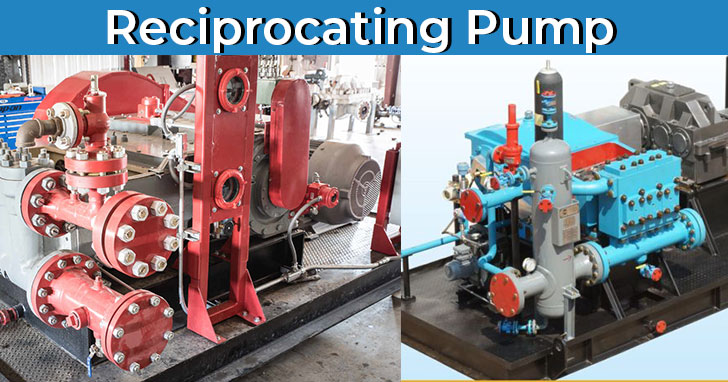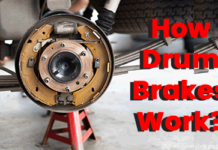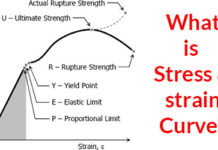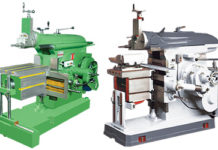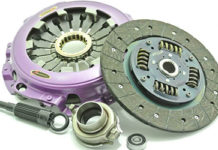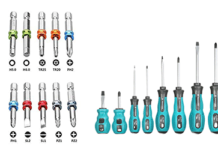Contents
- 1 What is Reciprocating Pump?
What is Reciprocating Pump?
Here you will learn about what is a reciprocating pump, parts, working principle, and difference between centrifugal pump and reciprocating pump.
Different Types of Reciprocating Pump
The reciprocating pump converts the mechanical energy into hydraulic energy by sucking the liquid into the cylinder. In the reciprocating pump, the piston is reciprocating and with its thrust on liquid, it increases hydraulic energy.
This pump is also known as a positive displacement pump as it discharges a definite quantity of liquid. This is used where it has to handle a small quantity of liquid and delivery pressure is large.
Read Also: What is Centrifugal Pump?Parts of Reciprocating Pump
Cylinder
In the cylinder, the piston is moving to and fro. The piston got power by connecting rod which connects with piston and crank.
Suction Pipe
In the suction pipe, the source of water connects to the cylinder. The water flows through a suction pipe in the cylinder.
Delivery Pipe
The source of the water leaves the cylinder and it discharges through the delivery pipe.
Suction Valve
The water enters from the suction pipe into the cylinder via a suction valve.
Delivery Valve
The flow of the water discharge from the cylinder into the delivery pipe.
Air Vessels
Air vessel is a closed chamber made from cast iron. It has two ends the one end is open at its base and water flows into the vessel through it. The air vessel is fitted to the suction pipe and delivery pipe of this pump to get a uniform discharge.
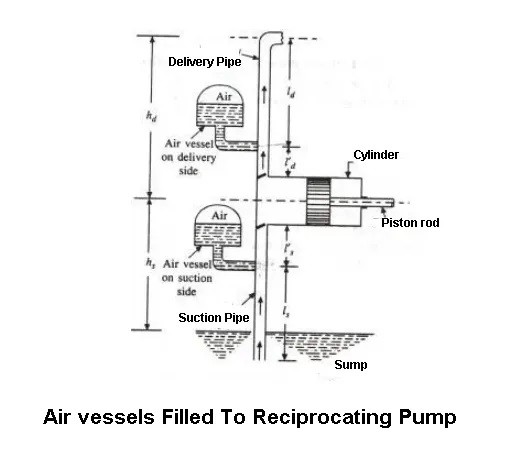
What are the functions of Air Vessels?
Air vessel is used to get a continuous flow of water at the uniform rate.
To reduce the amount of work in frictional resistance in the suction pipe and delivery pipe.
For running the pump at high speed with separation.
Types of Reciprocating Pump
- Simple hand-operated reciprocating pump
- Power-operated deep well reciprocating pump
- Single-acting reciprocating pump
- Double-acting reciprocating pump
- Triple-acting reciprocating pump
- Pump with air vessels
- Pump without air vessels
Working Principle
There are two different working principles:
- Single-acting reciprocating pump
- Double-acting reciprocating pump
1. Single Acting Reciprocating Pump
In the single-acting pump, the piston moves forward and backward in the cylinder. Pistons are reciprocating by means of a connecting rod. This connecting rod connects the piston and rotating crank. Crank is rotated by an electric motor.
This suction and delivery pipes with suction and delivery valve are connected to the cylinder.
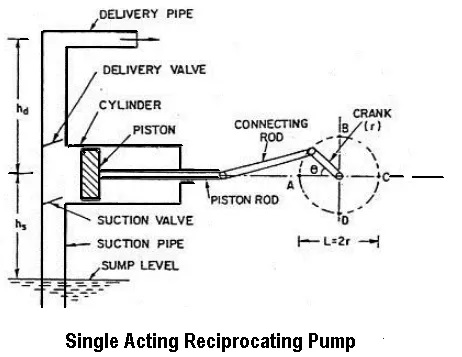
The water enters into the cylinder through the suction valve
Water leaves the cylinder via delivery valve
When the crank rotates and in the first stroke of the piston and is called a suction stroke, water enters into the cylinder. In the suction stroke, the crank is rotating from A to C (00 to 1800) piston is move to the right side of the cylinder. As a reason for this, the vacuum creates in the cylinder. Due to this vacuum, the suction valve is open and water enters the cylinder.
The next is delivery stroke, water leaves the cylinder. The crank is rotating from C to A in the delivery stroke from 1800 to 3600 and the piston is move to the left side of the cylinder. And due to this, the pressure is increased inside the cylinder. The pressure causes the suction valve to close and open the delivery valve. After that, the water is forced to the delivery pipe and it raised to the required height.
2. Double Acting Reciprocating Pump
The water is acted on both sides of the piston as shown in the below image.
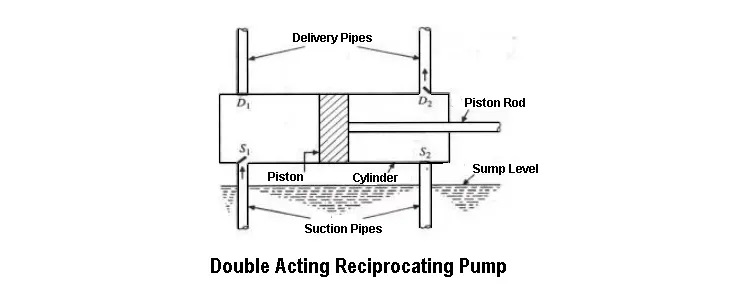
The two suction pipes and two delivery pipes are required for the double-acting pump. In this the when there is a suction stroke on one side of the piston and at the same time there is a delivery stroke on the other side of the piston.
In the one complete revolution of the crank, there is two delivery stroke and water is delivered to pipes by adding two delivery strokes.
What is the difference between the centrifugal pump and the reciprocating pump?
Centrifugal Pump |
Reciprocating Pump |
| It has simple construction as it has fewer parts in it. | This Has complicated construction as more number of parts. |
| It has more weight of pump for a given discharge. | Has less weight of pump for a given discharge. |
| This is suitable for a large discharge with small heads. | Suitable for less discharge with high heads. |
| This pump requires more floor space and a heavy foundation. | This requires less floor space and a simple foundation. |
| Less wear and tear and can handle dirty water. | More wear and tear and cannot handle dirty water. |
| There is continuous delivery and needs priming. | There are pulsating delivery and no need for priming. |
| This has low efficiency and runs at a higher speed. | It has higher efficiency and cannot run at a higher speed. |
| There is no requirement of Air vessels and its operation is quite. | This requires Air vessels and has complicated operation. |
| Less maintenance cost. | It has a high maintenance cost. |
| The thrust on the crank is uniform. | Thrust on the crankshaft is not uniform. |
Applications
- It is used for oil drilling operations.
- It is helpful for pneumatic pressure systems.
- Widely used for light oil pumping.
- Used for feeding small boilers condensate return.
FAQs
What are the applications of a reciprocating pump?
It is used for oil drilling operations, widely used in pneumatic pressure systems and light oil pumping.
What is the working principle of the reciprocating pump?
In this pump, the piston moves forward and backward in the cylinder. The piston is reciprocating by means of the connecting rod. The connecting rod connects the piston and rotating crank and the crank is rotated by means of an electric motor.
This is the information about the reciprocating pump.
🔔We hope this information will help you. For more new information click on the notification button and get regular updates from Unbox Factory.
Now if you find this information helpful, share it with your friends, family, and colleagues.
If you like this post, let us know by comment below, if you want to add-on information about this topic, comment the information. We will consider the information if it is relevant.
Thank you for reading.

